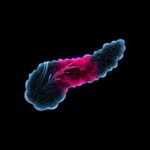[toc]
What is already known on this topic
During delivery and soon after birth, millions of microorganisms colonize the infant gut. These early gut colonizers play key roles in the maturation of the infant immune system, and can lead to long-lasting health consequences. However, the persistence of specific strains, as well as the source of persisting strains, remain unclear.
What this research adds
By analyzing the microbiota of preterm and full-term babies, researchers found that about 11% of early colonizers, mostly Bacteroides and Bifidobacterium, persisted during the first year of life. Full-term infants had more persistent microbes than preterm infants, and strains from the mother’s guts were more likely to persist than strains from other sources. The enrichment of bacterial genes for surface adhesion, iron acquisition, and carbohydrate degradation appear to also favor the growth of persistent commensals.
Conclusions
The findings offer a detailed view of the early gut colonizers, which could help to better understand how the microbiota is assembled during early life and lead to the development of microbial-based therapies to restore a healthy microbiota.
During delivery and soon after birth, millions of microorganisms colonize the infant gut. Now, researchers have found that about 11% of these early colonizers persist during the first year of life, and many of them come from the infants’ mothers.
The study, published in Cell Reports Medicine, offer a detailed view of the early gut colonizers, which could help to better understand how the microbiota is assembled during early life. The findings could also have therapeutic applications, the researchers say. “By determining the types of strains that colonize in early life, where they come from, and what persistence-associated genetic traits they carry, we can […] gain insights into potential microbiome-based therapies when that assembly is disrupted,” they say.
Early microbial colonizers of the gut play key roles in the maturation of the infant immune system, and can lead to long-lasting health consequences. However, the persistence of specific strains, as well as the source of persisting strains, remain unclear. “There is potential for long-term effect if the first colonizing strains, which are often hospital-associated pathogens in premature infants, persist as infants develop,” the researchers note.
To analyze strain persistence and the sources of persisting strains, Jillian Banfield at the University of California, Berkeley, and her colleagues followed 23 full-term and 19 preterm infants from birth to one year of life.
Microbial persistence
The researchers collected and analyzed more than 400 fecal samples from babies and their mothers, and infant fecal samples were assigned to seven groups based on the children’s ages at the time of sample collection. The team classified bacterial strains detected during the first two months of life as early colonizers. These bacteria were then identified as ‘persisters’ or ‘non-persisters,’ depending on whether they stayed within the infant gut beyond eight months of life.
About 11% of early colonizers persisted during the first year of life, the researchers found. Bacteroides and Bifidobacterium strains were more likely to persist than were strains of other bacterial species, whereas strains of Veillonella and Clostridium were less likely to persist.
Full-term infants had more persistent microbes than preterm babies. The team discovered that persisting Bacteroides vulgatus and Bifidobacterium breve were more common in full-term infants, whereas Bacteroides uniformis and Escherichia coli were more likely to persist in preemies.
Mother effect
By measuring bacterial strains shared between infants and their mothers, the researchers found that maternally derived strains, mainly Bacteroides, were more likely to persist than strains from other sources. This suggests that bacterial strains from mothers are better adapted to the gut than non-inherited strains, the researchers say.
Further analyses suggested that the enrichment of genes for surface adhesion, iron acquisition, and carbohydrate degradation may also favor the growth of persistent commensals. In particular, bacteria that had diverse enzymes that synthesize or break-down carbohydrates were more likely to persist. This finding suggests that metabolic flexibility favors microbial adaptation to the gut as the infants are weaned, the researchers say.
In E. coli persisters, the team observed an enrichment of virulence factors, including genes coding for surface adhesion and iron acquisition, which are typically carried by specific strains of pathogenic E. coli. “Although we cannot state whether resident E. coli strains carrying virulence genes will have long-term negative effects on host health, their exclusive presence in preterm infants in this study implies that prematurity can affect the infant microbiome for a span of time,” the researchers say.








